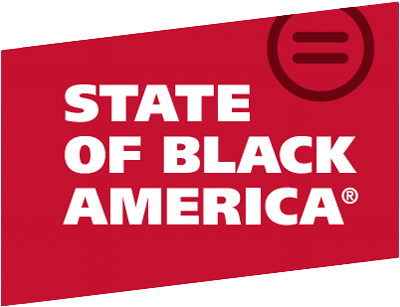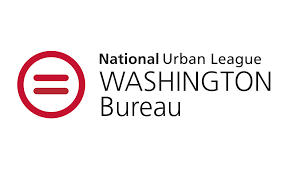Racial inequality has long been a dominant feature of American economic and social life. Racial disparities in employment, income, and wealth are broad, deep, and persistent. For more than a century, the National Urban League has worked hard, and has deployed a variety of strategies, to eradicate racial inequality, strengthen the capacity of African Americans to fully participate in the economy, and secure equal opportunity for all. The Main Street Marshall Plan is an effective, far-reaching instrument with the capacity to achieve those goals.
Once implemented, the Main Street Marshall Plan can open new and increased avenues for African Americans to further enjoy “life, liberty, and the pursuit of happiness,” but five critical conditions must be present in order for the plan to fully realize its goals and objectives:
- An annual gross domestic product (GDP) growth of 3 to 4% over the next four to five years.
- Full employment—measured at an average annual unemployment rate of 4.4 to 4.7%.But, full employment at any total workforce unemployment rate with a 2:1 Black/white unemployment ratio is unacceptable.African Americans must be drawn into the job market, eliminating the disparity in labor force participation, the employment/population ratio, and the relative number of long-term and involuntary unemployed.
- A reduction in income inequality. The median income of Black families has been below 60% that of white family income since the data on family income by race was first collected a half century ago.While the number of Black middle and higher-income earners has grown since the 1970s, wide racial disparities in income and wealth remain, reflecting significant disparities in income earning opportunities.
- Targeted community revitalization spending in areas of the greatest need.Targeting is the most economically efficient strategy for reducing location-based poverty in both urban and rural areas.
- Saving and investment policies that build and preserve wealth among middle-income families.Policies that promote affordable and sustainable homeownership and business creation, coupled with financial literacy and investment counseling, are essential for building and preserving wealth.
The reality is that the Main Street Marshall Plan will be implemented within the context of national fiscal and monetary policies that undergird the U.S. economy. Fiscal policy, i.e. national revenue and spending, is revealed in the federal budget.
Each year the president presents a budget proposal to Congress expressing the administration’s values and government spending priorities. But while the president proposes, Congress disposes. Congress sets the guidelines for revenue and spending, which the executive branch then implements through government operations.
The fiscal year 2018 budget proposal presented by the Trump White House is vastly misaligned with the goals and objectives of the Main Street Marshall Plan. The proposed budget would increase defense spending by $54 billion, and offset the increase by stripping money from more than 18 other vital agencies. Some of the largest cuts are in agencies essential to implementing the plan:
- The Department of Housing and Urban Development anticipates a 13% cut, along with a $3 billion cut in the Community Development Block Grant program, the elimination of the home investment participation and self-help homeownership opportunity programs, and the loss of $35 million in funds for Section 4 community development and affordable housing.
- The Department of Education faces a 14% cut that would eliminate many grants for after-school programs, aid to low-income and minority college students, and would result in significant cuts in work-study aid for all college students.On the other hand, $1.4 billion would be directed to charter schools, private schools and other school choice initiatives.
- The Labor Department may be forced to contend with a 21% cut, the proposed closing of many Job Corps centers, the elimination of grants for nonprofit groups that provide training for health service jobs, and reduced spending for job training programs targeted to disadvantaged youth—pushing more of the responsibility for workforce development onto states and employers.
The core parameters of the Trump budget would lower the corporate tax rate to 25%, increase military sending, and create a $1 trillion infrastructure program. It would sharply reduce the size of the federal workforce, a sector where African-American workers have traditionally secured stable, well-paying jobs since World War II.
On balance, while the proposed budget may boost GDP growth, it would certainly increase income inequality. The failure to address entitlement programs—73% of the budget—would worsen the deficit and increase the federal debt.
The Trump budget would likely not increase economic growth enough to support its own ambitious spending goals. The economy grew 2.1% on average since the recovery began in 2009, and is projected to grow 2.5 to 2.7% in 2018. That is below the minimal 3 to 4% growth level required to support the proposed military and infrastructure spending.
Economic inequality would balloon under the Trump budget by skewing most tax cuts toward the rich and restraining capital formation for small businesses. That, plus the limited impact on the growth rate, would do little to increase the rate of job creation—now averaging 200 thousand per month. Moreover, the narrative that accompanied the budget presentation was silent on preserving the safety net, or supporting measures to strengthen opportunities for low-income workers to increase their participation in the economy.
Financial markets appear to be retreating from an earlier, heady optimism initially expressed following Trump’s election. The S&P 500 rose about 6.5% since the election on anticipation of faster growth stemming from expected Trump economic policies and regulatory reform, but share prices slumped following the failed congressional attempt to repeal the Affordable Care Act. Financial markets will likely be cautious and show more volatility as White House and congressional negotiations on taxes, spending, and regulatory reform evolves.
The proposed Trump budget would be devastating for the Main Street Marshall Plan, for National Urban League affiliates, and communities throughout the country. It would do little to accelerate economic growth, reduce long-term unemployment, expand economic opportunity for minority group workers, or ease the burden on low-income families.
If there is a saving grace, it is that the Trump budget is not likely to be adopted by Congress. Many of the budget’s proposals are likely to run into stiff resistance from lawmakers on Capitol Hill—including Republicans. Some of the budget proposals clash with the economic interests of voters in red-state congressional districts that voted for Donald Trump.
The budget proposal threatens to truncate the modest, but steady progress the economy has made over the last eight years, and would make the struggle to erase racial inequality increasingly difficult. In that sense, the budget proposal is not only detrimental to African Americans, but to the economic interests of all Americans.



